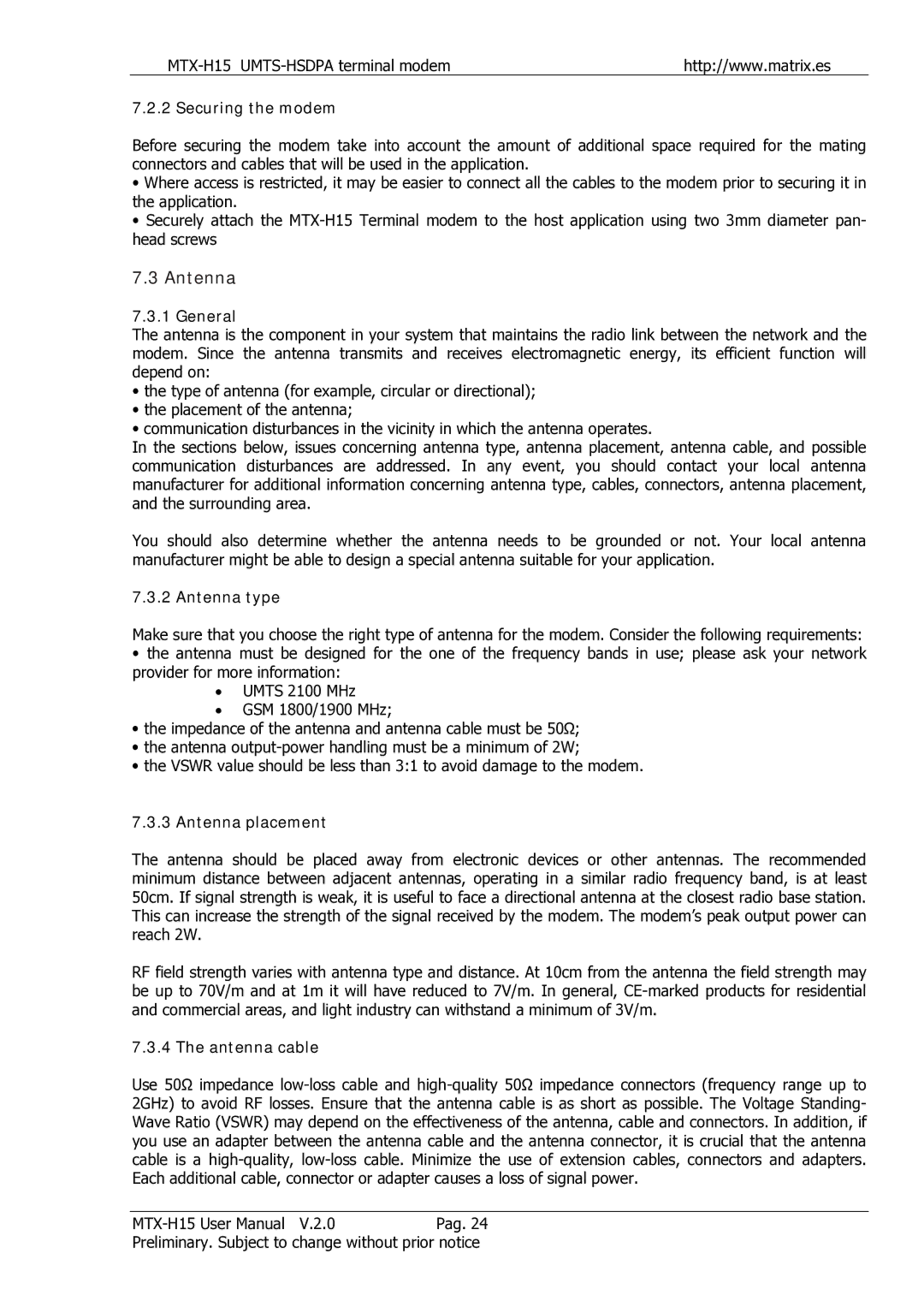http://www.matrix.es |
7.2.2 Securing the modem
Before securing the modem take into account the amount of additional space required for the mating connectors and cables that will be used in the application.
•Where access is restricted, it may be easier to connect all the cables to the modem prior to securing it in the application.
•Securely attach the
7.3 Antenna
7.3.1 General
The antenna is the component in your system that maintains the radio link between the network and the modem. Since the antenna transmits and receives electromagnetic energy, its efficient function will depend on:
•the type of antenna (for example, circular or directional);
•the placement of the antenna;
•communication disturbances in the vicinity in which the antenna operates.
In the sections below, issues concerning antenna type, antenna placement, antenna cable, and possible communication disturbances are addressed. In any event, you should contact your local antenna manufacturer for additional information concerning antenna type, cables, connectors, antenna placement, and the surrounding area.
You should also determine whether the antenna needs to be grounded or not. Your local antenna manufacturer might be able to design a special antenna suitable for your application.
7.3.2 Antenna type
Make sure that you choose the right type of antenna for the modem. Consider the following requirements:
•the antenna must be designed for the one of the frequency bands in use; please ask your network provider for more information:
•UMTS 2100 MHz
•GSM 1800/1900 MHz;
•the impedance of the antenna and antenna cable must be 50Ω;
•the antenna
•the VSWR value should be less than 3:1 to avoid damage to the modem.
7.3.3 Antenna placement
The antenna should be placed away from electronic devices or other antennas. The recommended minimum distance between adjacent antennas, operating in a similar radio frequency band, is at least 50cm. If signal strength is weak, it is useful to face a directional antenna at the closest radio base station. This can increase the strength of the signal received by the modem. The modem’s peak output power can reach 2W.
RF field strength varies with antenna type and distance. At 10cm from the antenna the field strength may be up to 70V/m and at 1m it will have reduced to 7V/m. In general,
7.3.4 The antenna cable
Use 50Ω impedance
Preliminary. Subject to change without prior notice
